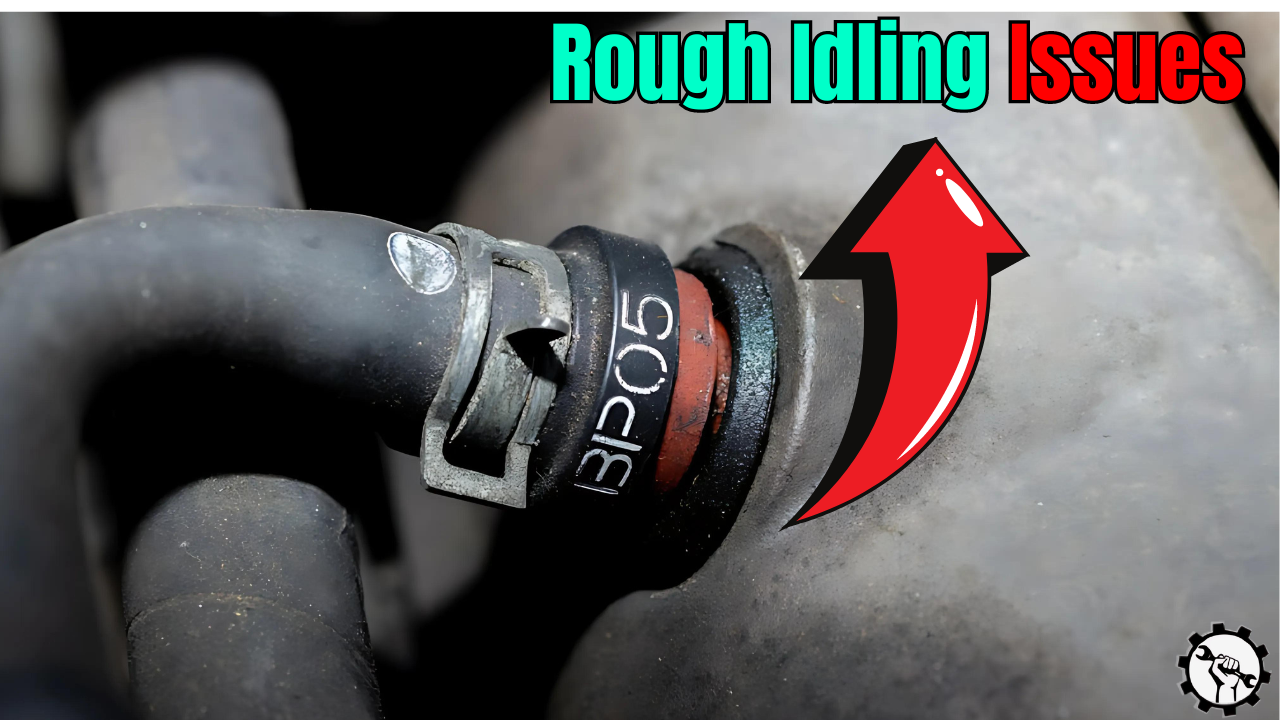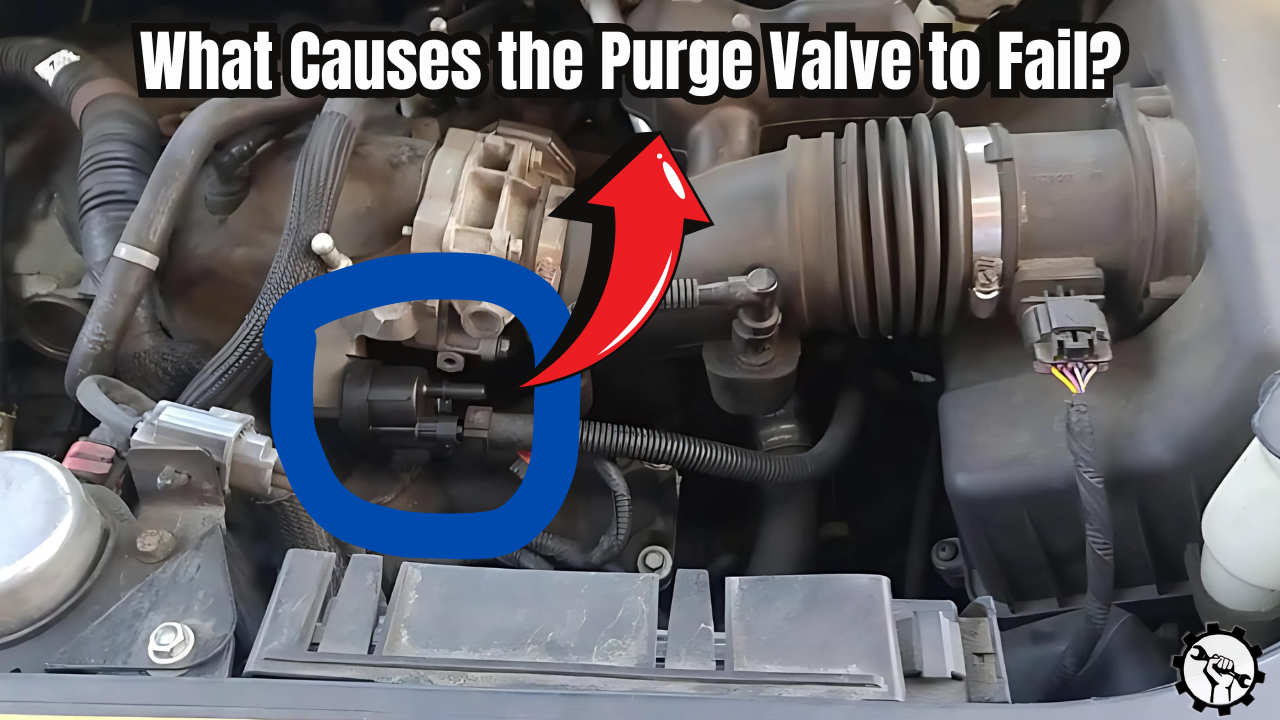The purge valve which technically refers to canister purge valve is a core component of your vehicle’s EVAP (Evaporative Emission Control) system. It’s responsible for controlling the flow of fuel vapors from the charcoal canister into the engine.
When this valve malfunctions, it can lead to various symptoms that may affect your vehicle’s performance, fuel efficiency, and emissions. If you think your car has a bad purge valve, these are the key signs you’d likely notice:
Check Engine Light ON
One of the earliest indicators of a faulty purge valve is an illuminated check engine light. This occurs when the ECU (Engine Control Unit) detects an abnormal flow of fuel vapors, either too much or too little, being released by the valve.
At this point, the ECU will typically register diagnostic trouble codes (DTCs) such as P0441 (Incorrect Purge Flow) or P0446 (Vent Control Circuit Malfunction), which are specifically related to issues within the EVAP system.
At this point, whenever you notice the check engine light is on, you can run a scan or consult with a mechanic to determine if the purge valve is the cause.

Rough Idling Issues
A malfunctioning purge valve, particularly one that is stuck open, can cause a vacuum leak in the EVAP system. This disrupts the air-fuel mixture required for smooth combustion, leading to a rough idle issues on the engine.
The engine may run unevenly or vibrate noticeably when the vehicle is stationary, particularly when stopped at traffic lights. If left unaddressed, this issue can escalate, potentially causing the engine to stall altogether.

Difficulty Starting the Engine
Another common symptom of a bad purge valve is difficulty in starting the engine. When the valve is stuck open, it can introduce excessive air into the combustion chamber, disrupting the ideal air-fuel ratio necessary for ignition.
This condition can cause prolonged cranking before the engine starts or even prevent the engine from starting altogether. If you experience consistent trouble starting your vehicle, the purge valve may need inspection or replacement.
Poor Engine Performance
Even if you can start the engine, a faulty purge valve can cause poor performance while driving. The improper regulation of fuel vapors can lead to a lean fuel mixture, reducing the engine’s power output. You might notice a lack of acceleration, especially during uphill driving or when trying to pass other vehicles.
As expected, this loss of power is particularly noticeable at lower RPMs. This particular condition would make driving less responsive and enjoyable. The loss of power caused by bad purge valve is consistent and even get worst if it’s not handled promptly.
Poor Fuel Efficiency
A stuck purge valve, whether open or closed, can significantly impact your vehicle’s fuel efficiency. If the valve is stuck closed, fuel vapors that would normally be redirected to the engine for combustion are vented out of the EVAP canister instead.
This condition will wasted fuel and decreased gas mileage. On the other hands, a valve stuck open may lead to a lean fuel mixture, which can also reduce efficiency by forcing the engine to compensate for the excess air.

Failed Emissions Test
The purge valve plays a crucial role in controlling emissions by preventing harmful hydrocarbons from escaping into the atmosphere. A malfunctioning valve can lead to increased emissions, making it likely that your vehicle will fail an emissions test.
You may also notice excessive black smoke coming from the exhaust, indicating incomplete combustion and higher levels of pollutants being released. However, this isn’t always the case.
Fuel Smell from the Engine
If you can smell gasoline vapors coming from the engine compartment, it could be a sign that the purge valve is not closing properly, allowing fuel vapors to escape. This not only affects the performance and efficiency of the vehicle but also poses a safety risk due to the flammability of the vapors.
Collapsed Fuel Tank
In rare cases, a purge valve stuck open while the EVAP canister vent valve is closed can create excessive vacuum pressure in the fuel tank, causing it to collapse or deform. This condition can trigger the P0457 code for an EVAP leak, often associated with a loose or missing gas cap.
Instead of one, several factors can contribute to the malfunction of a purge valve. From bad wiring to malfunctioning ECU, faulty components can cause the purge valve to fail. See if your vehicle has one or more of these issues:
- Malfunctioning Purge Valve Solenoid: The solenoid, which controls the opening and closing of the valve, can fail, leading to improper valve operation.
- Bad Wiring or Connectors: Loose, damaged, or corroded wiring and connectors can interfere with the valve’s electrical signals.
- Dirt Build-Up: Accumulation of dirt, debris, or fuel deposits can block the valve, preventing it from functioning correctly.
- Leaks: Leaks from the purge valve can prevent it from maintaining proper pressure, affecting its performance.
- Malfunctioning ECU: Since the ECU controls the valve, a malfunction in the ECU can lead to improper valve operation.
Conclusion
A bad purge valve can lead to a range of symptoms, from rough idling and starting difficulties to failed emissions tests and poor fuel efficiency. Addressing these symptoms early by diagnosing and replacing the faulty valve can prevent further damage to the vehicle and ensure it runs smoothly and efficiently. If you have issue(s) with your purge valve, you better consult a qualified mechanic for proper diagnosis and repair.

As a mechanical engineer, it’s easy for David to explain the functionality of the tool. David test most of the tools before writing a review. its help him to learn something new and suggest the best product for you.






